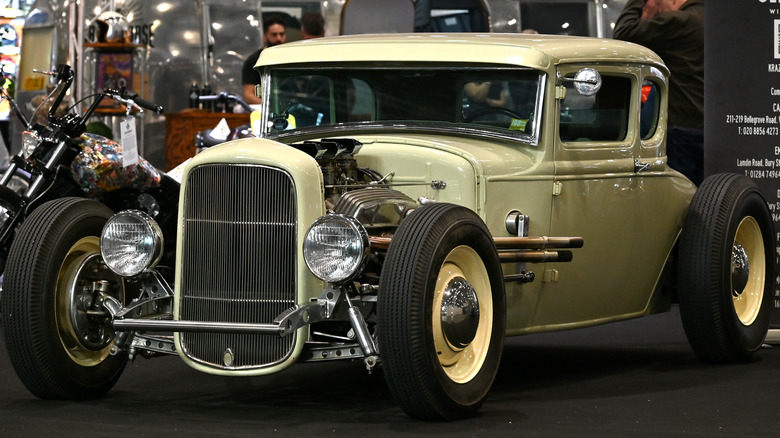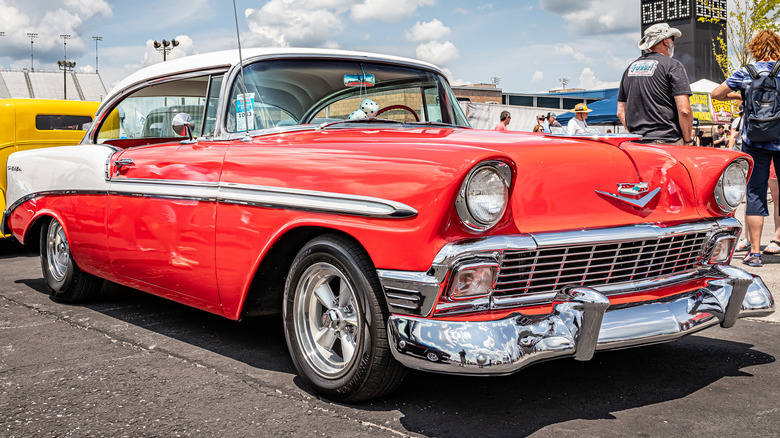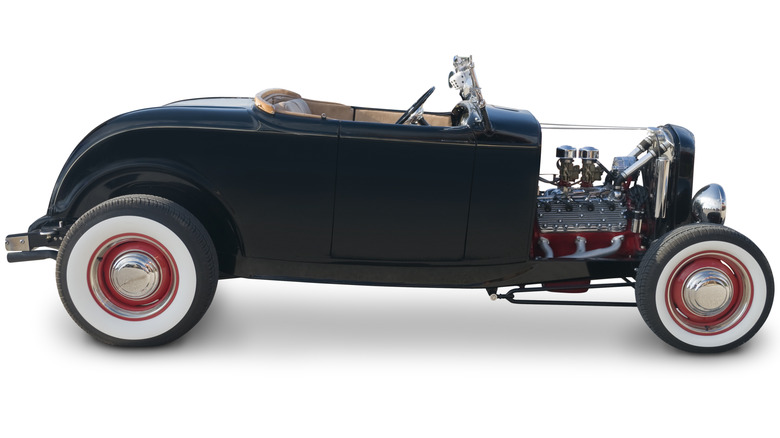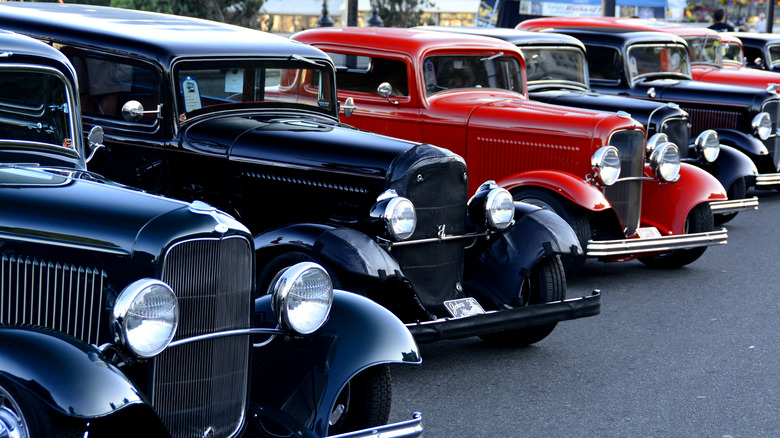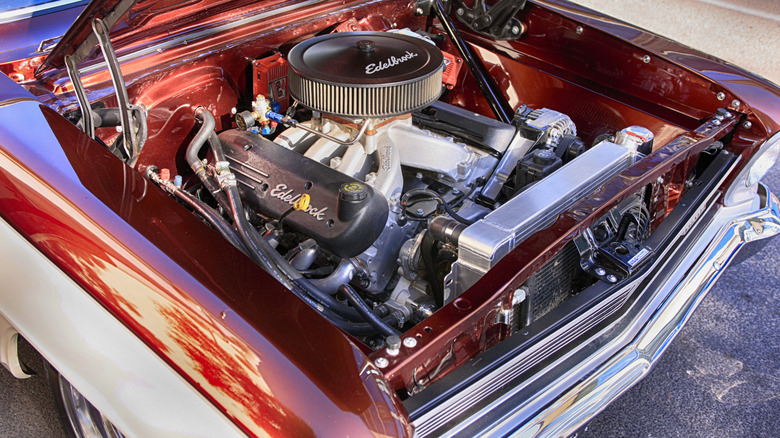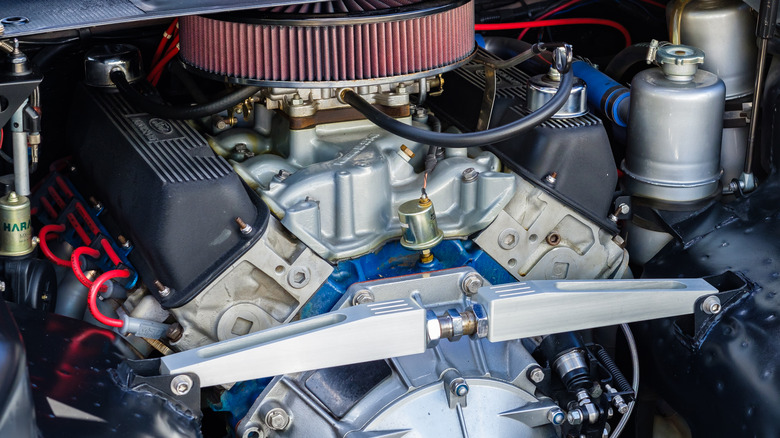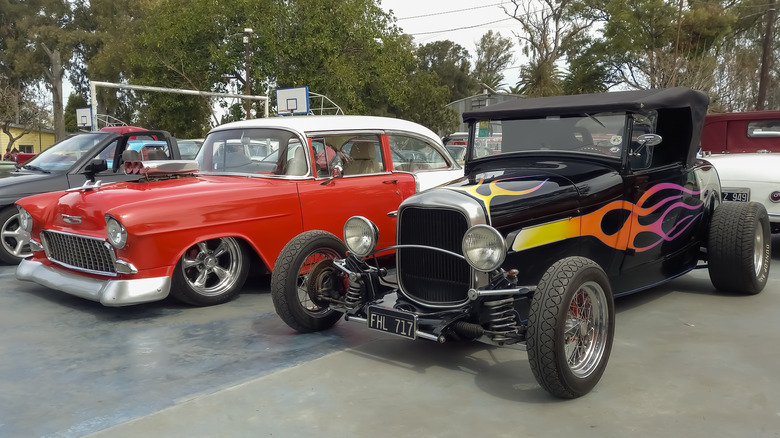Ford 302 V8 Vs. Chevrolet 305 V8 - Which Is Better For Hot-Rodders?
Invented by Frenchman Leon Levavasseur to power airplanes, the mighty V8 has become an icon of American automotive history. Cadillac introduced America to the V8 motor in 1914, and the car industry hasn't looked back. Big, beefy, and powerful, the smooth operation of big block V8s powered decades of innovation, but it wasn't until the 1950s that the next evolutionary model arrived: the small block V8.
The small block has been a mainstay of hot rodding and car modification since, and there are reasons for that. They're synonymous with cheap, relatively efficient power. Small blocks are lighter, less expensive to build and maintain, and offer greater fuel efficiency than their big block brethren.
Like so much in the annals of automotive history, the small-block engine was born of competition. Introduced in 1932, Ford's Flathead V8 became popular with hot rodders for its power and accessibility, and Chevrolet wanted to counter that with small displacement and affordable power of their own. By the 1960s and 1970s, virtually every American car company had a range of small and big block engines. Consumers could choose their displacement from several engines designed to outdo the competition.
Fast-forward to the 21st century and the rise of battery-powered vehicles, these small block V8s of the past have become valued by hot rod builders as inexpensive yet powerful power plants for their hot-rodding projects. This leads us to two of the most prevalent small blocks in the market today: the Ford 302 and the Chevrolet 305. Each has pros and cons, but it begs the question: which engine is better for hot rodders with empty engine bays? SlashGear has evaluated each engine based on performance, upgradeability, availability, and popularity in the rodding community.
What is a 305? History of the Chevrolet 305
In 1952, an engineer named Ed Cole scored a job at Chevrolet. His mission? Cut down Ford by developing a lightweight, small-block engine that could combat the popularity of the Ford Flathead V8. Before long, Chevrolet produced some of the most famous V8s of all time: the 283, 327, 350, and 400 cubic-inch small blocks saw action across the Chevy lineup for decades. But what about the 305?
The oil embargo of the 1970s hamstrung an American market used to gas-guzzle power, significantly impacting how car companies approached design. Chevrolet introduced the 305 as a more efficient option in the days of gas station lines that stretched around the block.
Chevrolet achieved this by downsizing what they had built with their 350. A lighter crankshaft, reduced stroke, and a smaller bore built into the 350 infrastructure created a robust engine that could outperform many of Chevrolet's six-cylinder offerings while taking a smaller toll at the pump. The 305 saw widespread use; rodders can find it under the hood of Chevrolet's C/K series pickup trucks, the GMC Savana, and the Express utility van.
Iterations powered several of GM's most vaunted performance cars. The Camaro Z28, Iroc-Z, Pontiac Firebird Trans Am, and Corvette got the 305 treatment. Sure, this was mainly in the power-crunch 70s and 80s, but it speaks to the utility and popularity of the 305. High production numbers mean junkyards are brimming with underappreciated 305s yearning for a hot-rod resurrection.
What is a 302? History of the Ford 302
The Ford 302 motor, better known by some as the 5.0, arrived on the scene in 1968. It was the final link in a series of V8 motors produced at the Ford plant in Windsor, Ontario. With Ed Cole's work at Chevrolet proving the popularity of the small block V8, Ford had to answer. The result was the introduction of the Ford 221 small block V8 in 1962. But gearheads know the 221 isn't exactly a household name. The more famous 289 arrived two years later, in 1963, on the brink of the introduction of the Mustang and the ensuing muscle car wars. By 1968, Ford had stroked the 289 to achieve the magical displacement Ford fans have come to know and love: the 302.
Unlike the 305 and its gas-crunch genesis, Ford's initial vision for the 302 was based on performance. The gas crisis and the Clean Air Act of 1970 were imminent, but manufacturers were free from those restrictions.
Like Chevy's 305, the 302 saw a wide range of use. Initially associated with performance cars like the Ford Mustang and Mercury Cougar, the 302 also saw service in the Fairlane, Ranchero, Crown Victoria, Grand Marquis, and others. Perhaps the ultimate iteration is the Boss 302, produced in the late 1960s. Those particular engines might be collector pieces at this point, but the 302 also enjoyed a huge production run, making it an excellent choice for rodders searching for a power plant.
305 compared to the 302
Aside from being developed at different times for different purposes, the Ford 302 and Chevrolet 305 have several differences. Both engines were prominent in the third-generation Camaros and Mustangs. Both make great bases for hot rodders looking for a solid engine.
Throughout a 22-year production run between 1976 and 1998, Chevrolet designed eight iterations of the 305. The entire series used the same block and 3.480-inch stroke as the 350 but reduced the bore to 3.743 inches and installed a lighter crankshaft to answer the call for embargo-friendly V8s. Horsepower ranged between 160 and 230, though a hot-rod builder can up that number significantly. Pre-1982 models, the LG3 and LG4, suffered from weak camshafts that required replacement, but Chevrolet corrected this problem, and most rodders will install a performance cam in there, anyway.
Ford's 302, later dubbed the 5.0, had an entirely different genesis than Chevy's 305, as it was a performance engine from the start. Arriving in the halcyon days before the oil embargo and Clean Air Act of 1970, Ford introduced the 302 in 1968. The original 302s were good for up to 230 horsepower at the outset, though that number would drop as the 1970s developed into the 1980s. With a four-inch bore and a three-inch stroke, the 302 produced good power at high RPMs. Ford built the original 302 at their Windsor plant from 1968 to 1979, and further production of the 5.0 from 1982 to 2001 means that, like the 305, there are tons of engines out there.
Pros and cons of the Chevy 305
Chevrolet's 305 V8 shares many pros with Ford's 302. Like Ford, the Chevrolet had an enormous production run, meaning engines should be able to be found with little trouble. The Chevrolet also scores points for being a reliable, capable, highly customizable engine for big horsepower numbers. They have proven so popular over the years that the aftermarket is brimming with crate engines and performance components designed to get the most out of your build.
Unlike the 302, the 305 was built as an emissions-friendly V8 using the same architecture as the Chevy 350. While not necessarily a con, the argument remains that Chevrolet fans could easily enjoy the extra 45 cubic inches of displacement for similar amounts of money and work. Since most rodders aren't building their projects to be gas-sippers, the 305 comes off as the undersized football player fighting for a place as a starter.
Pros and cons of the Ford 302
One of the nice things about the Ford 302 is that it is physically a small engine. Working on it and fitting it into engine bays gives rodders more elbow room and a reduced chance of smashing knuckles. The 302 also benefits from an enormous production run across all kinds of cars; finding a wrecked one should be easy. Even if your local junkyard is plumb out, the format has been so beloved that finding a crate engine for your project is a cinch. The aftermarket for the 302 is so robust that builder can find virtually any performance part they want for their engine.
There is no doubt that the 302 is one heck of an engine. With a production span lasting decades, it has garnered a reputation for reliability, but would-be rodders should consider the following potential problems. Timing chain wear, leaky seals, and cheap censors on earlier models are all problems that consistently show up with the engine. Ford's first sequential fuel injection system, introduced in the mid-1980s, is also a weak spot for the 302.
Chevy vs. Ford: what kind of hot rodder are you?
Your preference for one engine or the other will ultimately boil down to one question: what kind of rodder are you?
Cars, and especially hot-rodders, can be emotional. Brand loyalty can be fierce; sometimes, it runs in bloodlines from parent to child. Like so much when it comes to car customizing, the engine choice can come down simply to personal preference. Perhaps your father was a Chevrolet fan, and you wish to continue that legacy. Or maybe the same for Ford; the point is that Chevrolet engines play well with Chevrolet cars, and Ford engines play well with Ford. It's rare to see a 1933 Ford Coupe with a Chevy powerplant. Some would even call it blasphemy.
If you're craving a Model-T rat rod or the aforementioned '33 Couple, you should probably shoot for the 302. If a Tri-Five hot rod tickles your tinkering, it has to be powered by a Chevy, right? So much of hot rodding is down to personal style and preference that which engine you go with is practically pre-ordained.
The verdict & methodology
You may want to build your hot rod dream around the superior small block, plain and simple. So which do you choose: the Ford 302 or the Chevrolet 305?
Each engine would make a fine small-block powerplant for your hot rod build, but one crucial consideration must be considered: the Chevrolet 305 is essentially a defanged 350. If you must have a small-block Chevrolet for your build, the 350 has nearly all of the same parts for similar prices, and it comes with the bonus of 45 extra inches of displacement.
Both engines are highly customizable, can be built on a budget, and slot nicely into hot rod builds. SlashGear judged them based on performance, upgradeability, availability, and popularity in the rodding community. However, the smaller, high-revving, race-oriented Ford 302 takes the prize, not because it is overtly superior to the 305, but because anyone looking for a Chevrolet small block would do well to upgrade to the 350.
